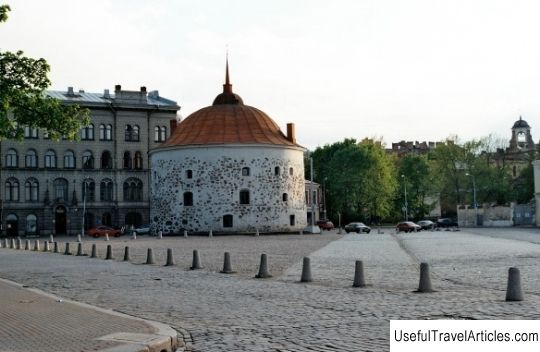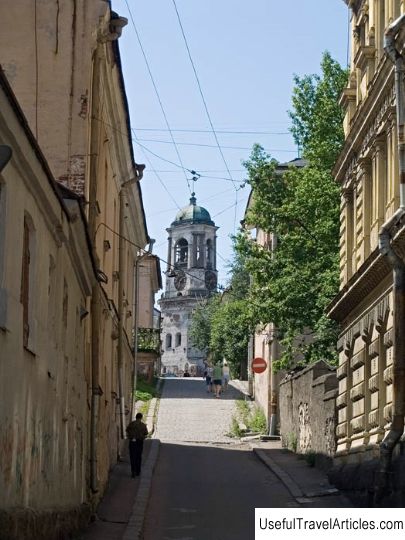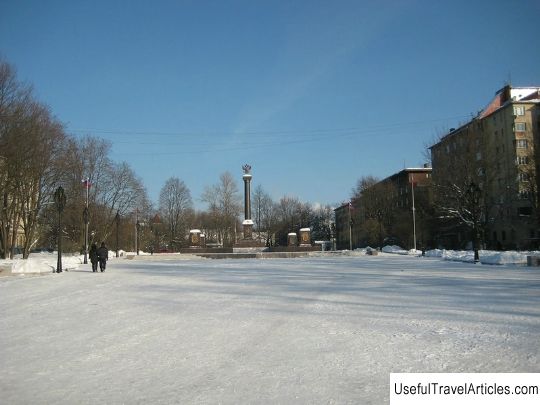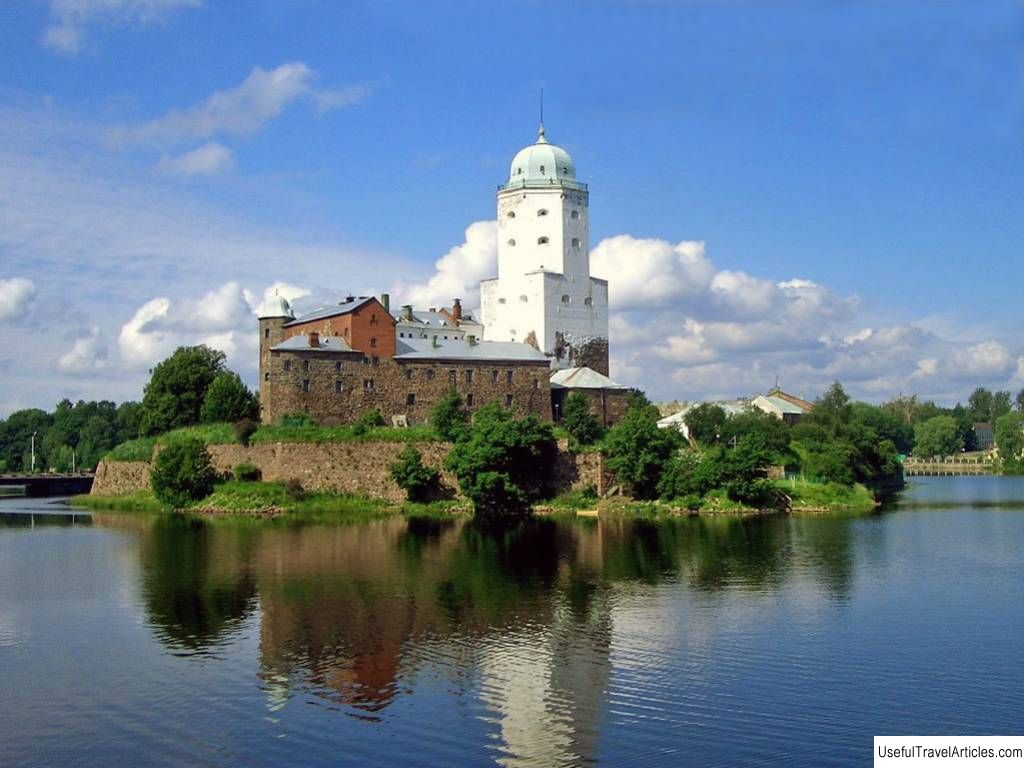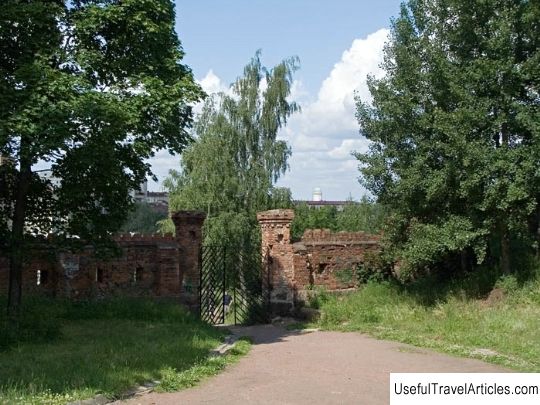Town hall tower description and photo - Russia - Leningrad region: Vyborg
Rating: 9,2/10 (2498 votes) 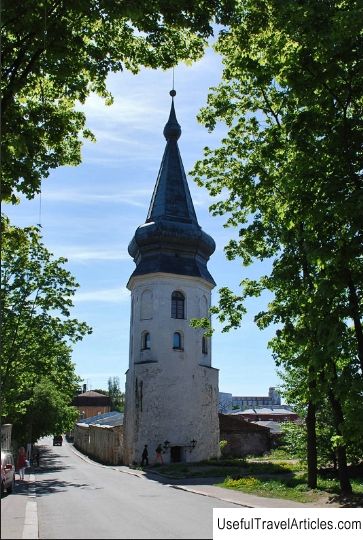
Town hall tower description and photos - Russia - Leningrad region: Vyborg. Detailed information about the attraction. Description, photos and a map showing the nearest significant objects. Photo and descriptionThe town hall tower is made of stone, in the plan it is quadrangular, one of the two surviving battle towers of the Vyborg fortress. It was built in the 1470s. along with other towers, the walls of the defense of the Stone City. The town hall tower is the only military engineering structure that has survived to this day, which was part of the defense line of the southeastern wall of the Stone Town. By the end of the 15th century. Vyborg was a well-fortified fortress, which consisted of two defense centers: the Stone Town on the mainland and the castle on the island, adapted for independent defense, which was proved during the siege of 1495. Russian troops, led by Vasily Shchenyi, Yakov Zakharievich and Vasily Shuisky on September 21, 1495 g. approached Vyborg, closed a continuous ring of siege around it. The besieging units had a significant numerical and technical advantage (artillery). The fortress is - untrained peasants and 500 German mercenaries. In total there were about 1.5 thousand defenders of the fortress. During one of the sorties, almost 900 people died, which weakened the defense of the fortress. On October 13, Russian troops attempted to storm the fortress for the first time, but to no avail. After that a long and grueling siege began. A detachment from Sweden was sent to help Vyborg, but it did not reach the fortress. During the shelling, three towers on the southeastern wall of the Stone City were destroyed. On November 30, the decisive assault on the fortress began. Russian troops were able to capture the Andreevskaya Tower. The battle went on for seven hours, but the Russian soldiers were unable to build on their success. The Swedish commander Knut Posse, who commanded the besieged garrison, organized a counterattack. The defenders of the fortress managed to confuse the ranks of the invaders, setting a fire inside the fortress. Knut Posse gave the order to set fire to the captured tower. As a result, the tower was blown up. Significant losses of Russian troops forced them to stop the assault. And on December 4, Russian troops lifted the siege of the fortress and went home. Vyborg Castle and Stone Town proved to be quite perfect military fortifications. An attempt to take Vyborg was also undertaken by the troops of Ivan the Terrible in 1556, but it was also unsuccessful. The development of military technology has led to the need to change the designs of military engineering structures. The walls of the fortresses were made lower, but with greater thickness. The towers began to be erected more squat, but large in area. Military history has proven that during the defense of fortresses, fire directed at the flanks of the attacker is more effective than frontal. Towers began to be erected with some extension towards the field in front of the fortress walls. To improve the city fortifications, such a building was also erected in Vyborg. Information about the Town Hall Tower appeared only in 1558-1559. in connection with its renovation. The stages of the construction of the structure are well defined by the dimensional drawings of the same type of Cattle Drive Tower, which was dismantled in 1763 and by field studies that took place in 1974 in the Town Hall Tower. Initially, the tower had the appearance of an oblique structure under a gable roof, which protruded beyond the fortress wall. It had a height of 9.7 m (up to the ridge of the roof - 12.5 m). The tower is adjoined from both sides by a height of 5.7 m, a spindle, which is the remains of a dismantled fortress wall. The northern facade of the Town Hall Tower with the fortress wall constituted a single whole, i.e. with all its volume, it protruded towards the "field" to flank the adjacent sections of the fortress wall. Vertically, the Town Hall Tower was divided into three tiers (or "battle"). The so-called "plantar battle", which is the first tier of the tower, was covered with a vault. A stone staircase inside the tower led to the level of the "first battle", above was the "second battle", where there were five chamber embrasures (one in the rear wall and two in the side walls to conduct flanking fire). It is assumed that all the towers of the Stone Town, rectangular in plan, including the Town Hall Tower, were travel cards. The width of the entrance opening was 2.6 m. The opening going into the "field" has a rectangular shape, and inside the tower - a semicircular shape. Most likely, the passage from the outside was blocked by a drawbridge, as well as a gate locked with a horizontal bar. With the construction of the bastional Horned Fortress, the walls and towers of the Stone Town lost their military significance. The outer opening in the tower was filled with stone (most likely in the 16th century), while one combat embrasure with an emphasis for the arquebus was left in the masonry. When the tower finally lost its former significance, it was transferred to the jurisdiction town hall magistrate. An arsenal was set up here with weapons and combat armor of the townspeople who were obliged to defend the city if necessary. Since that time, the name of the tower has survived and has survived to our time - the Town Hall Tower. Later, the former defensive structure was used as the bell tower of the nearby cathedral of the Dominican monastery, and then the church of the Vyborg parish. It was this purpose of the building that caused its further alterations, which distorted the original appearance of the building. The town hall tower began to have the shape of an octagon on a four. And in 1758 the building was crowned with a pointed baroque roof. Later, after the fire and restoration at the end of the 18th century. the tower did not change its appearance. A fire on March 13, 1940 destroyed the wooden spire of the tower. The first restoration and repair work in the tower began in 1958. It was then that a temporary hip roof was built and window openings were sealed with shields. The building was mothballed and stood like that for almost 20 years. At the end of 1970. the baroque roof was restored on the tower by the architect A.I. Khaustova. However, the building stood abandoned, without utilities, landscaping until 1993      We also recommend reading Church of the Ascension of the Lord description and photos - Russia - South: Gelendzhik Topic: Town hall tower description and photo - Russia - Leningrad region: Vyborg. |
